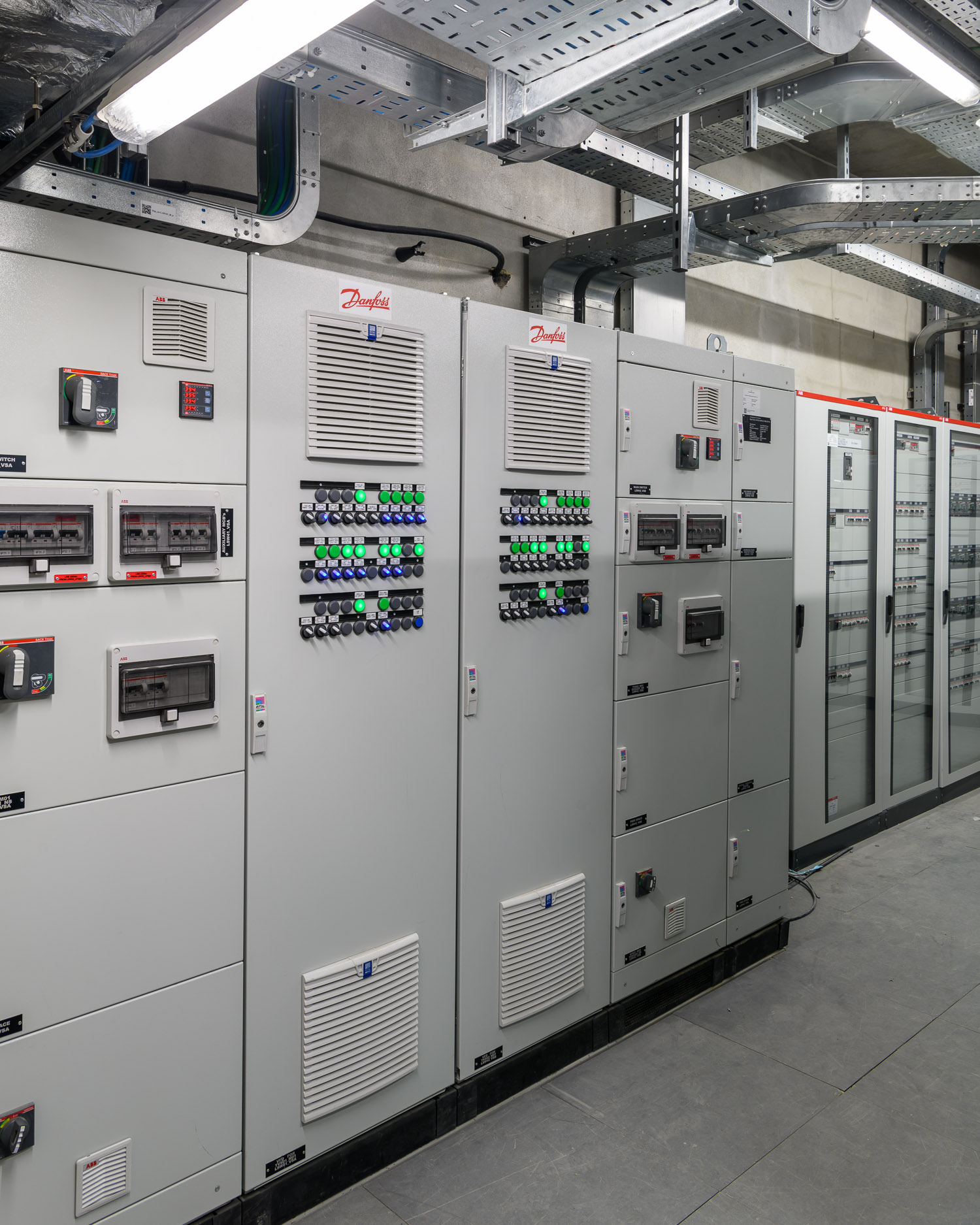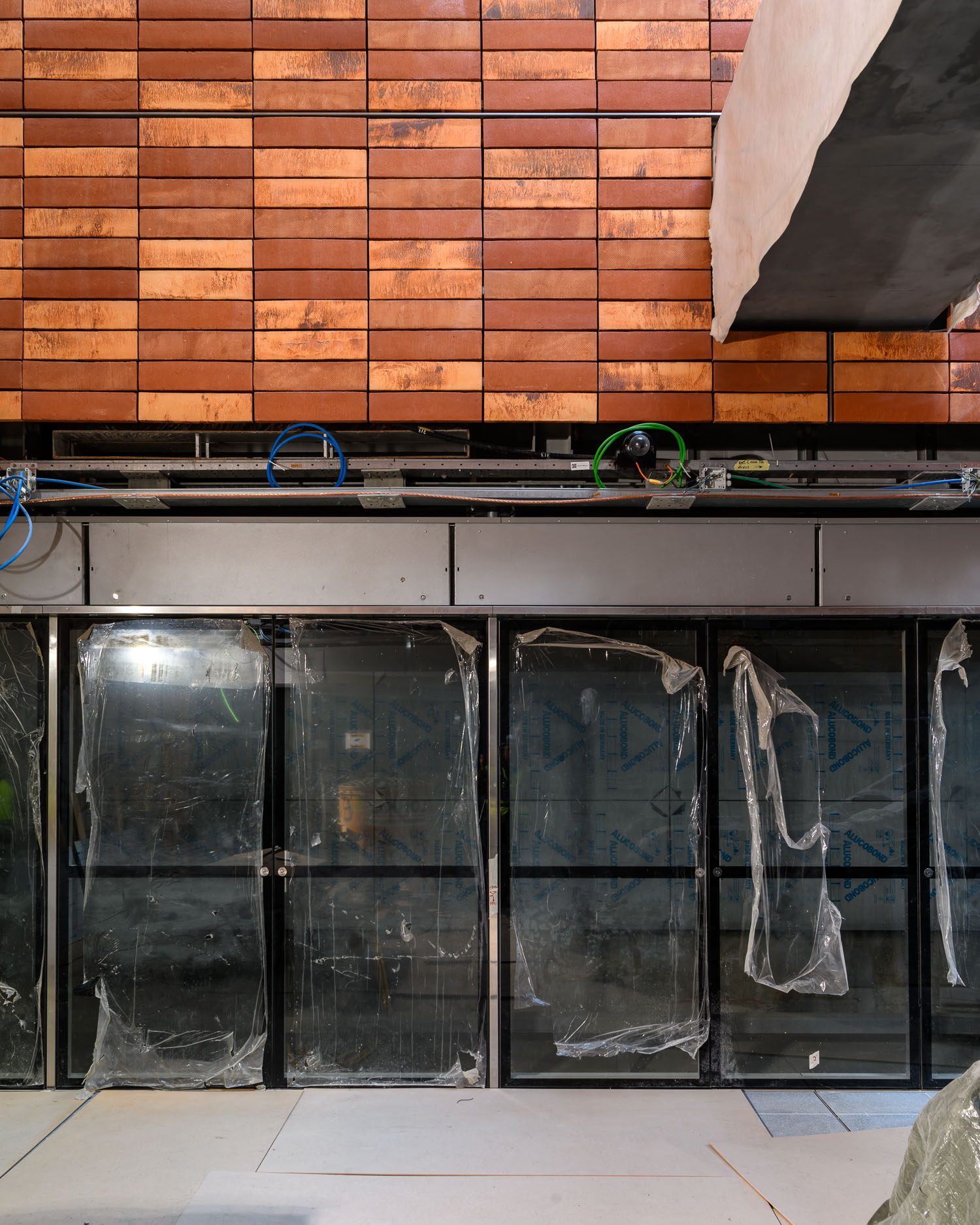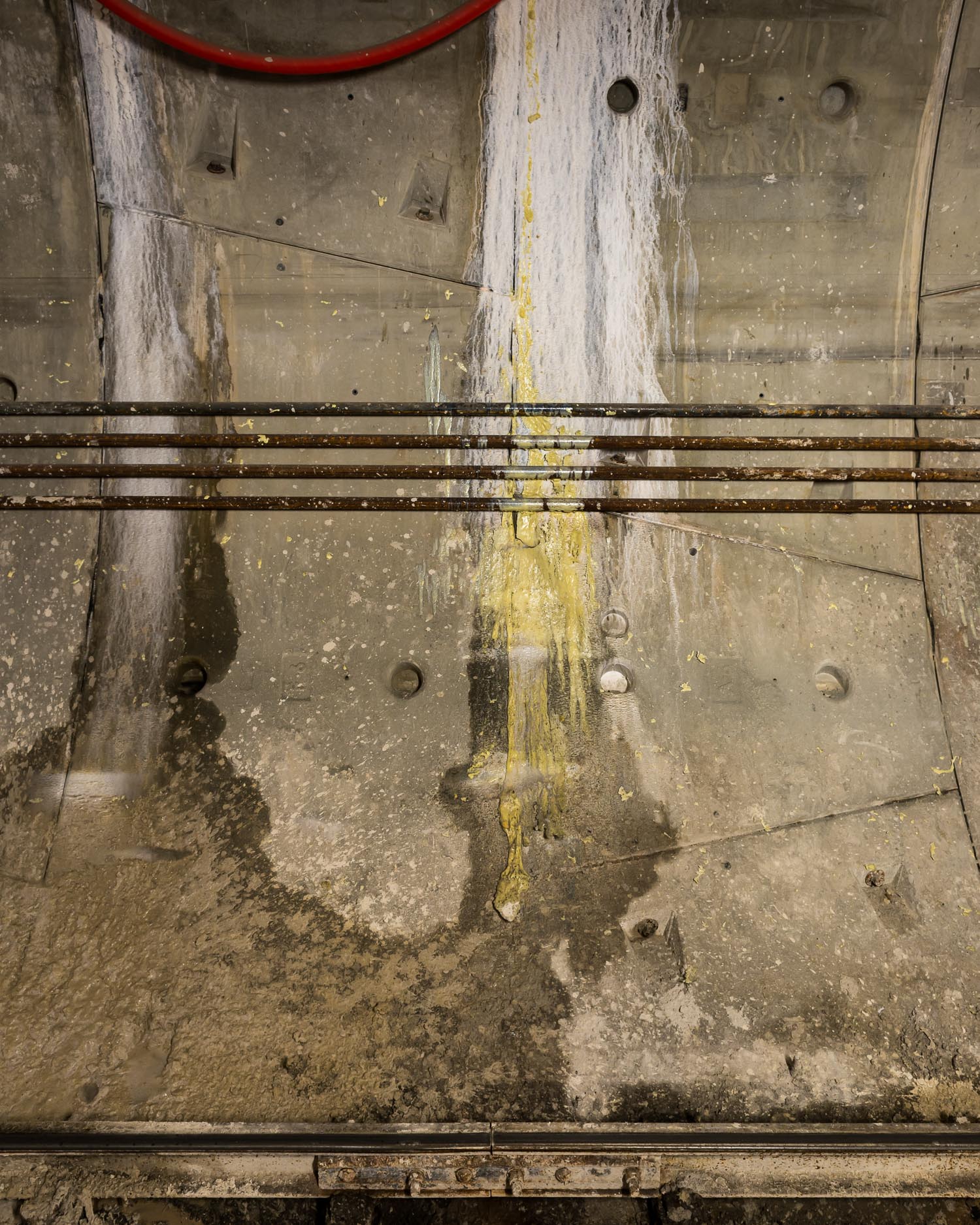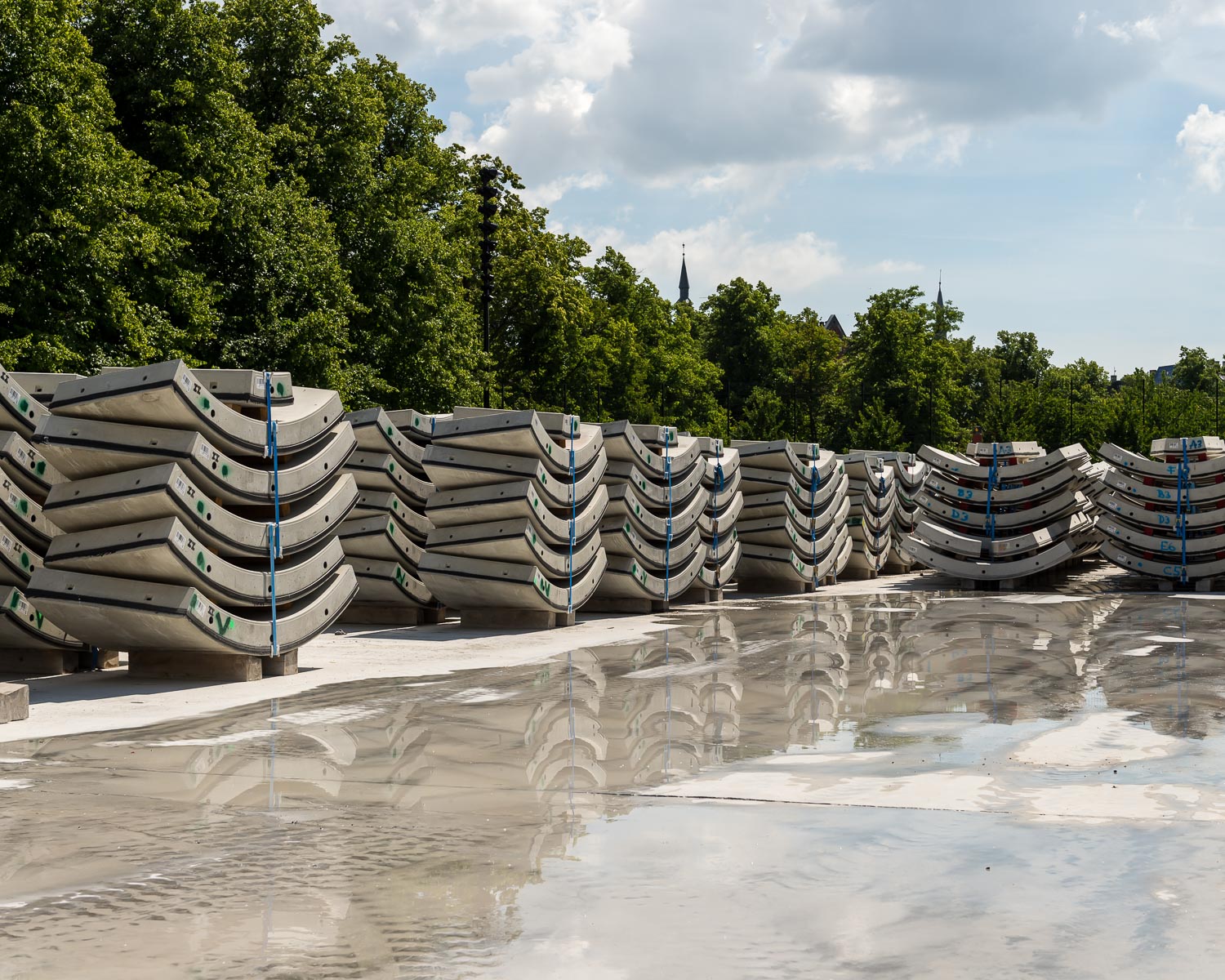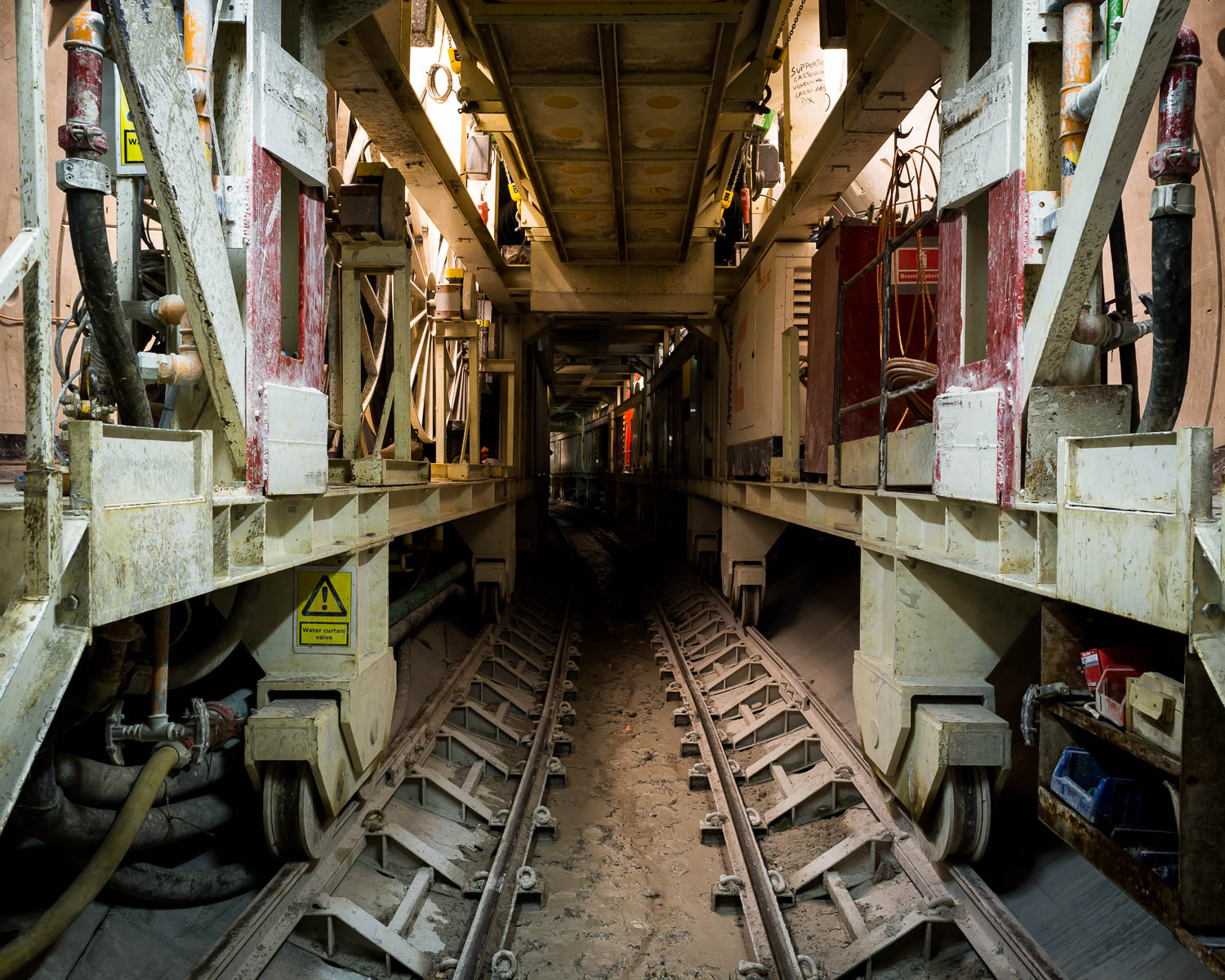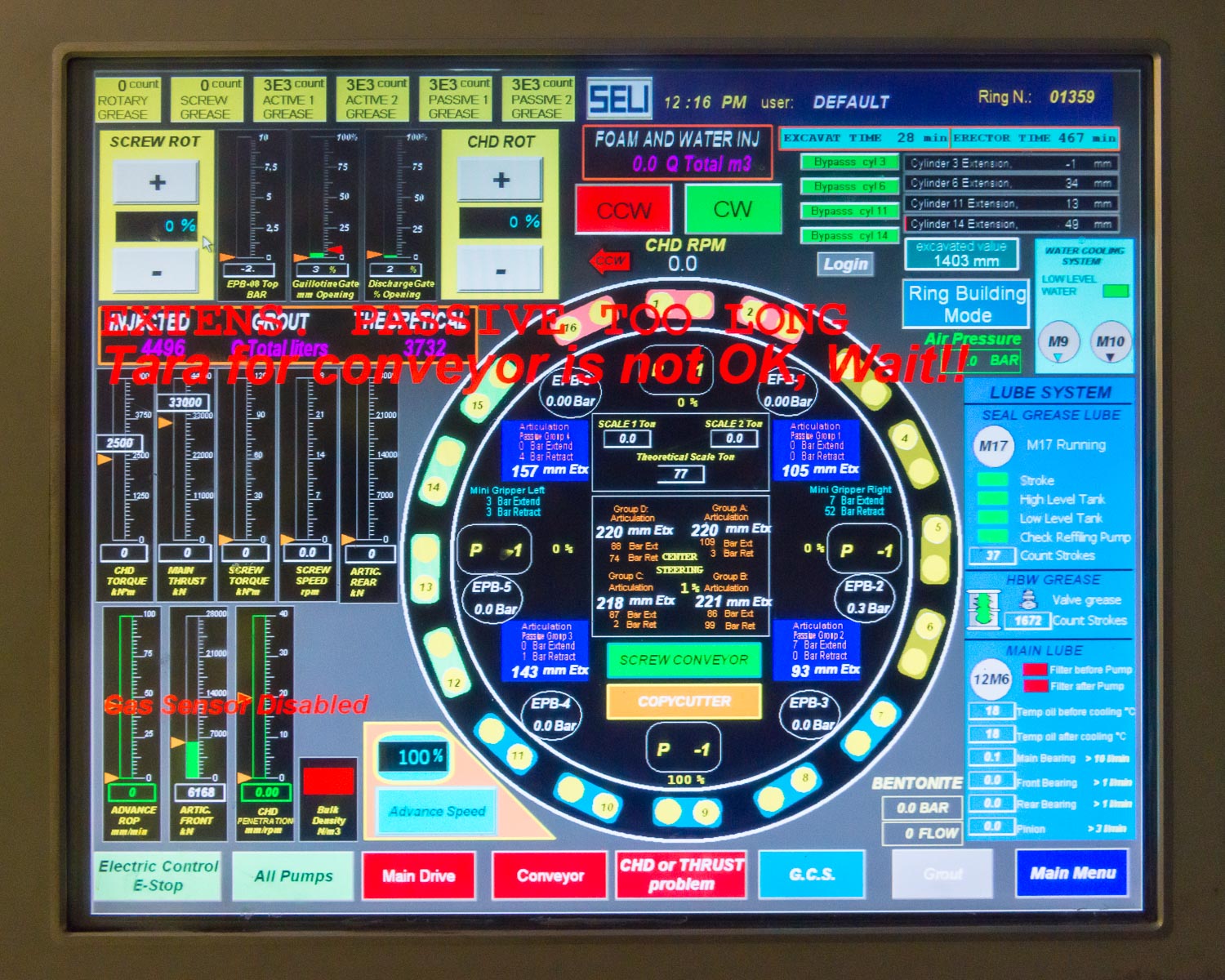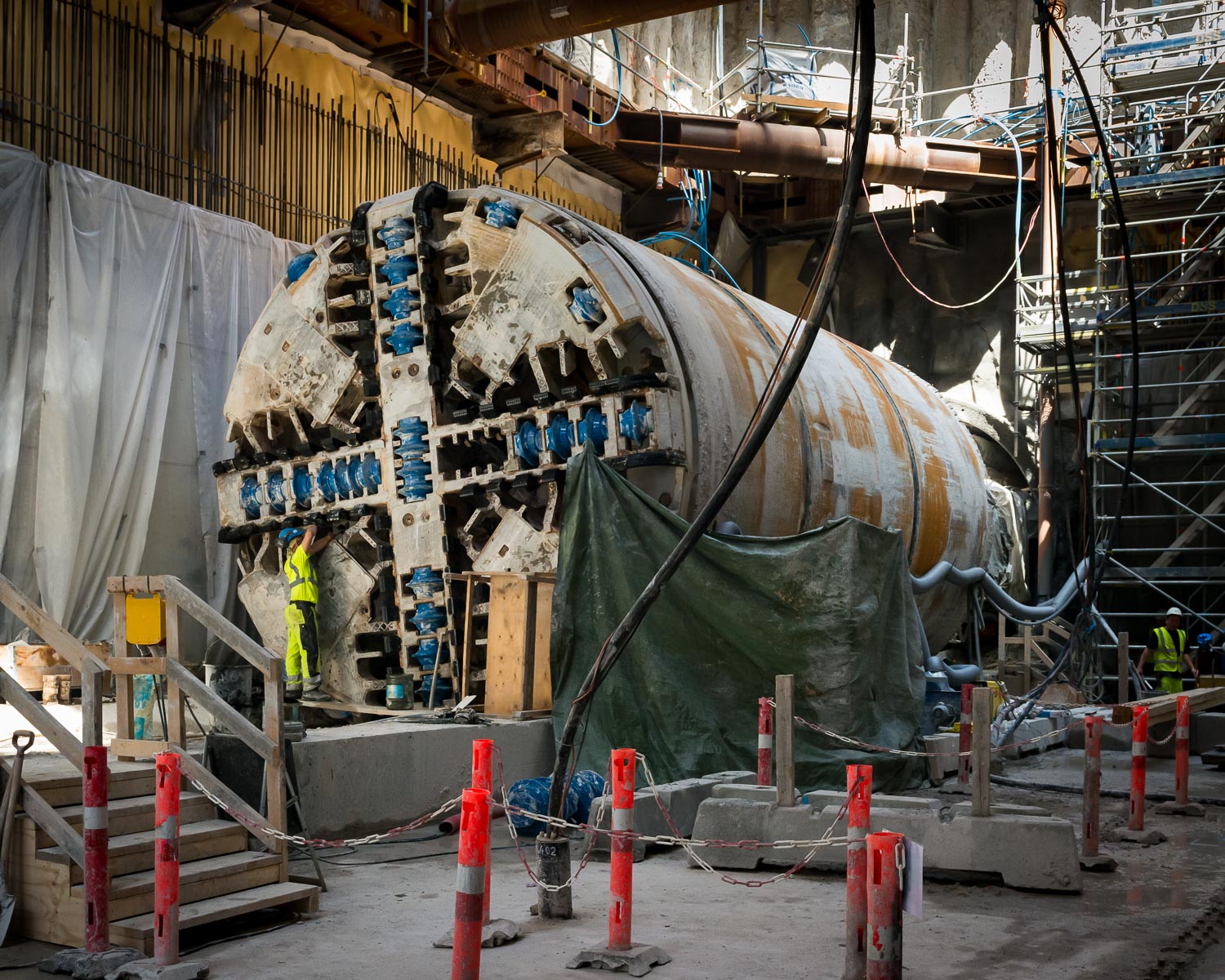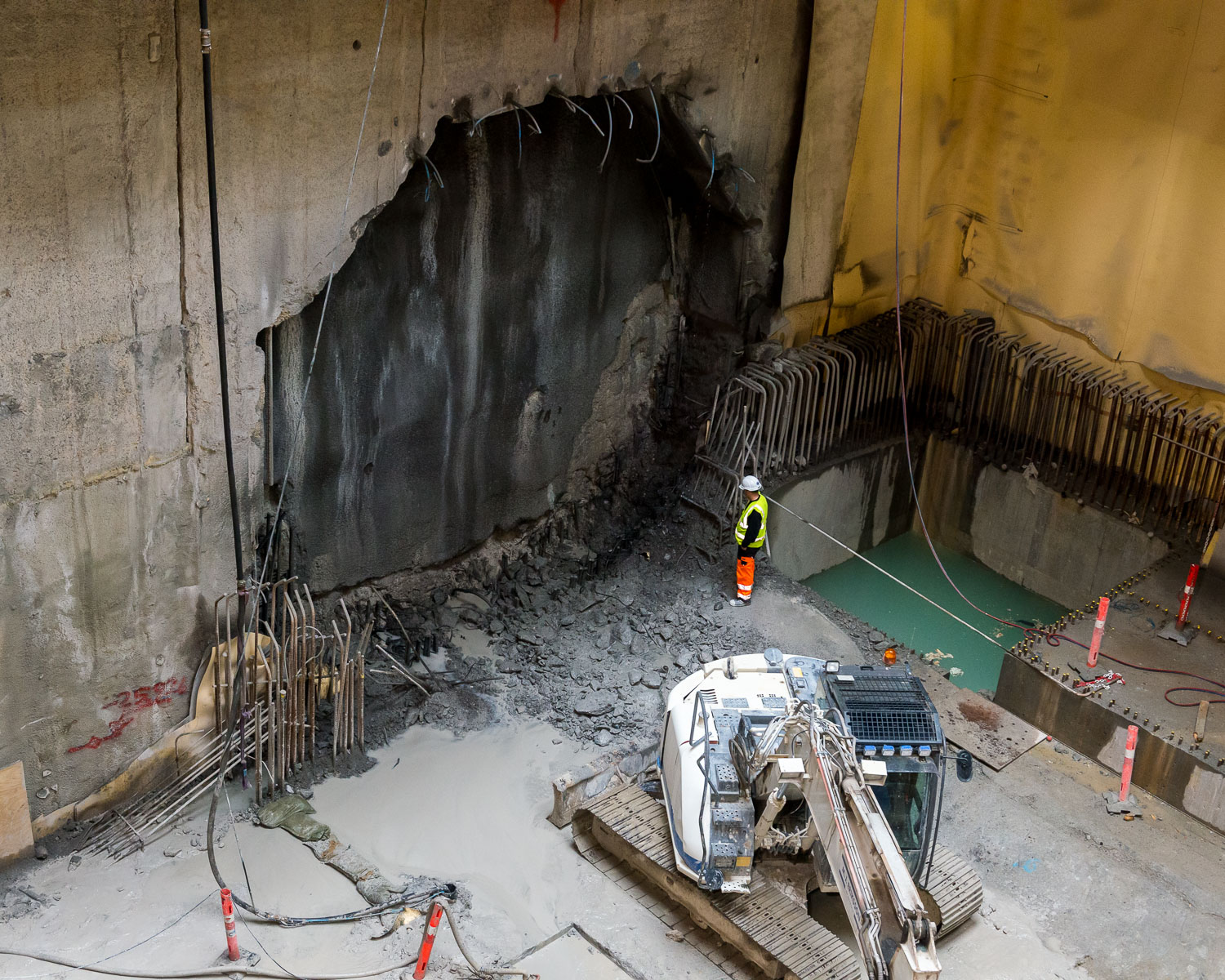Drill head being dropped into the shaft at Nørrebroparken, 2013
In Copenhagen they are building a huge extension to the Metro. And they are building it right under my house. Due to open in the summer of 2019, I’ve been photographing the progress in the tunnels since 2013.
I live in a very wonky house. Built as part of a terrace in the eastern part of Copenhagen in the 1870s, within ten years a couple of the houses in the street started to sink at the front and cause the terrace to bow violently outwards in the middle, my house being the epicentre of the violence. The house settled, reinforcements were made, interior doorways righted, and all was well with the world. Tourists walk down my street and take photos of my wonky house. Friends visit and complain of seasickness and disorientation when walking upstairs. I love my wonky house.
The path of the new extension to the Copenhagen metro goes directly under my wonky house. I mean literally, directly underneath. We knew this when we bought it six years ago, when I asked every relevant person I could get my hands on about the potential effects. "They know what they are doing these days, it's really rather clever stuff." When they started drilling under the house a couple of years ago it felt like the ground was going to open up and suck us in, but after a couple of weeks it was over and the house is no more wonky than it was to start with. Hopefully it stays that way.
When completed the 'Cityring' will form a circle around the city centre, consisting of 17 stations.
Three million tons of earth have been removed during the excavation and used to build a new area of the city at Nordhavn, and 500 trucks per day have carried the earth away from the sites – traffic lights in the city were changed to help the flow of extra traffic. Costing an estimated 24.8 billion kroner (US$3.7 billion), the metro is the largest construction project in the city since the 1600s and the line is estimated to carry 240,000 daily passengers, bringing the metro's total daily ridership to 460,000. When the new line opens, 85 per cent of the population of Copenhagen will be within 600 metres of a station, including me.
My first underground visit was in May 2013 before any drilling had begun, on the day that one of the two brightly painted, brand-spanking new drill heads was lowered into the abyss. Since then these 50-ton heads have crawled slowly forward and completed all of of the 15.5km route. The drilling machine has built the whole tunnel as it goes: the drill goes into a wall and leaves a finished tunnel behind it. It drills through the limestone about 30 metres under Copenhagen, re-enforces the walls and lays concrete sections in rings that have been pre-made in Germany.
Each ring is made up of six identical sections and one key section, and depending on the placement of that key section in each ring the tunnel can be made to turn left, right, up, down, upside down, inside-out and shake it all about. Actually the tunnel dips between stations in order to save energy – the train rolls down from the station, then the momentum carries it back up to the next one.
Right now the finishing touches are being made before the line opens at the end of the summer.



